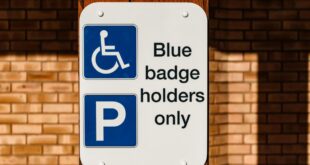During the first lockdown, it was all about stockpiling loo paper. Today it is stamps that people are hoarding.
On Monday the price of a first-class stamp will rise by 30p to £1.65, which represents the seventh increase in five years.
The price has doubled since March 2022, when it cost 85p to send a letter first class. Royal Mail blames “a very real and urgent financial sustainability challenge”.
In recent days, customers have been posting photos on social media of the piles of first-class stamps they have purchased from post offices or retailers to beat the rise.
Stamps bought today for £1.35 can still be used tomorrow, next week, at Christmas and beyond — even though the price has gone up.
Nicholas Royle, 61, from Manchester, has bought 100 first-class stamps in the past week using recent winnings from his NS&I Premium Bonds. He said: “Each time I use one, I’ll smile inwardly at the thought that I paid 30p less than Royal Mail will be charging.
“I run a small publishing business for short stories, Nightjar Press, which tries to break even, but Royal Mail makes it very difficult. Where possible, I now deliver books myself. I call it Royle Mail.”
Bexy Hassett, founder of Bexy Boo, a greetings card business in Cheshire, said she will have to pass on the higher delivery costs to customers. “No other business could put up prices 74 per cent in two years without improving their products or services but, because they have a monopoly, we have no choice but to keep using them,” she said.
While the price of first-class stamps has risen sharply in recent years, the price of second-class stamps has increased by only a few pence to 85p, and will not rise tomorrow.
This is because the postal regulator, Ofcom, has pegged the cost of second-class stamps to inflation until at least 2029 to ensure that posting a letter remains affordable.
Under Ofcom’s delivery targets, Royal Mail is meant to deliver 93 per cent of first-class letters on the next working day, and 98.5 per cent of second class letters within three working days.
Yet industry bodies believe the second-class postal service is being wound down, reflected in the diverging cost of the two types of stamps. Royal Mail has already called on the government to scrap second-class postal deliveries on Saturdays and also move to alternate delivery dates. Ofcom is currently considering these proposals.
The Greeting Card Association (GCA) suggested that customers could find themselves with a single-stamp system in the future and will be forced to pay the higher first-class price, which has no cap.
Amanda Fergusson, chief executive officer of the GCA, said: “At our annual conference [last month], we heard directly from Royal Mail that they had persuaded Ofcom that the future of the second-class delivery service is going to be chopped back to [deliveries on] two or three days a week.
“We fear the consequence of that collapse in trust will be a spiral of decline which will result in Royal Mail, in time, calling time on an affordable second-class stamp, leaving card and letter senders with no option but use a premium, uncapped, unregulated first-class stamp beyond their financial reach.”
As the universal postal service provider, Royal Mail is required to deliver letters six days a week and parcels five days a week to every address in the UK, at an affordable and uniform price.
However, Royal Mail says this has become too expensive to provide, due to falling letter volumes, leading to millions of pounds of losses. Letter volumes have fallen from 20 billion in 2004-5 to about 6.7 billion a year in 2023-4, with many people sending emails, texts or WhatsApp messages rather than a Christmas card, handwritten letter or birthday card.
Royal Mail, which is owned by International Distribution Services, said it is unsustainable to deliver so few letters six days a week. Ofcom will decide next year on the future of second-class deliveries.
In a statement last month, the regulator laid out its initial findings, saying: “If second-class letters continued to be delivered within three working days but not on Saturdays — and first class remained unchanged at six days a week — it would enable Royal Mail to improve reliability, make substantial efficiency savings and redeploy its existing resources to growth areas such as parcels.”
This weekend Citizens Advice criticised Royal Mail for raising the cost of stamps while also failing to provide a reliable service. A Sunday Times undercover investigation last year found that postal workers were being told to leave letters behind in the depots in favour of more lucrative parcels.
Tom MacInnes, the director of policy at Citizens Advice, said: “At a time when consumers are already feeling the squeeze, they’ll be forking out more for a postal service beset with delays, with millions of people missing important letters.
“Ofcom should be investigating these ever-higher prices for consumers, not sitting back while the postal service falls short of delivery targets for a half decade. We want to see the regulator reforming our postal service based on the needs of consumers, not Royal Mail’s bottom line.”
Nick Landon, Royal Mail’s chief commercial officer, said: “We always consider price increases very carefully. However, when letter volumes have declined by two-thirds since their peak, the cost of delivering each letter inevitably increases.
“The universal service [obligation] must adapt to reflect changing customer preferences and increasing costs so that we can protect the one-price-goes-anywhere service, now and in the future.”
Source link


